The Symbolism of Thousand Armed Avalokiteshvara – Universal Compassion
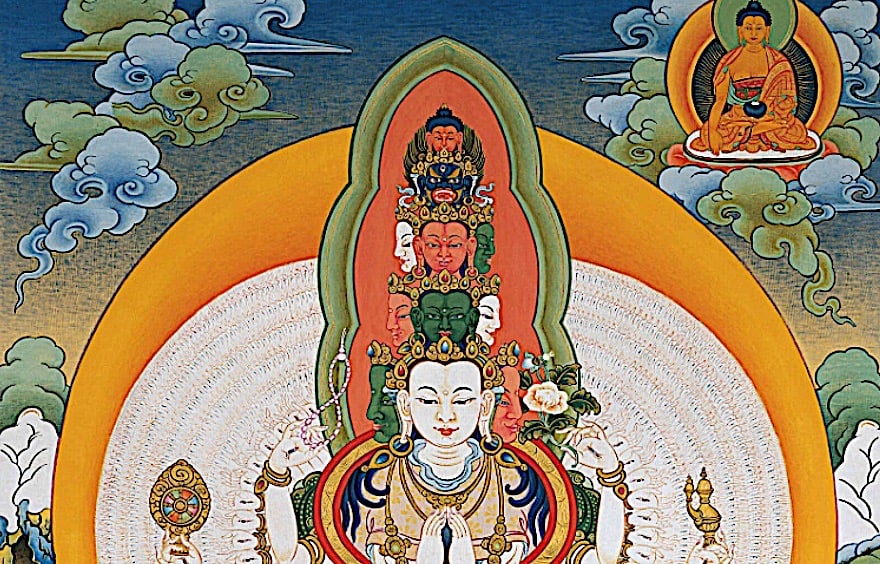
It seems there has not been very much written about the symbolism of Buddha of Compassion, Avalokiteshvara, in his Thousand Armed Form, so I thought I’d try to set down a few words here.
By Jason Espada
(Bio below.)
I recall some years ago being surprised to see how Avalokiteshvara is represented as male in India and Tibet, and then as female in the far East, where she is known by the names Quan Yin (or Guan Yin), and Kannon.
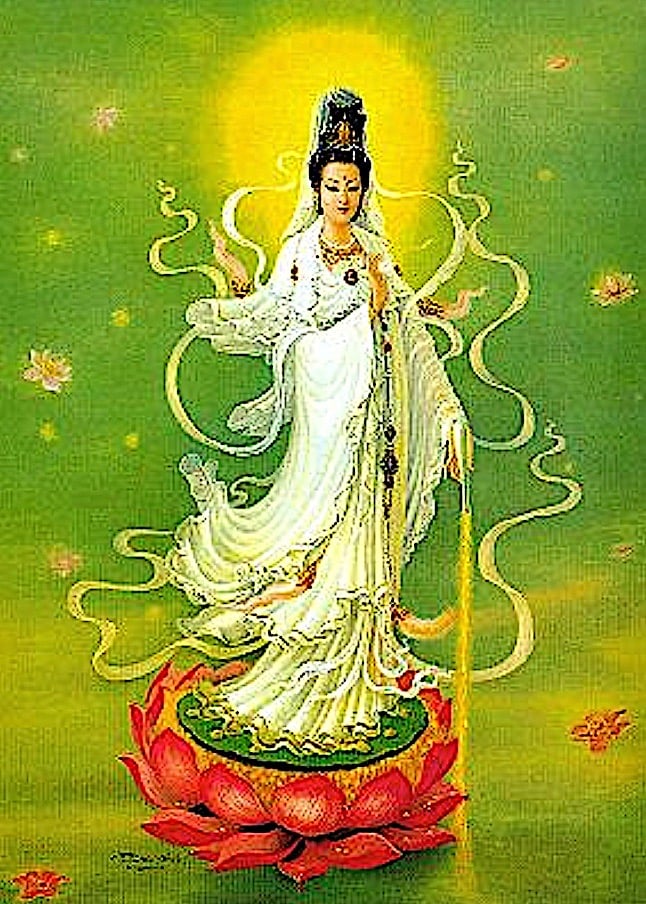
I have always related to the feminine aspect more, although this is beyond gender, or any one expression. I can sense both masculine and feminine qualities in Avalokiteshvara.
These are represented by the sun and the moon, respectively.
He, or She is Enlightened Compassion, so close to every living being, and is beloved as Tara in Tibet, and now in the West.
The myths of Tara’s miraculous birth say that she came from the tears of Avalokiteshvara, from His great compassion, and said to him, We will help you…
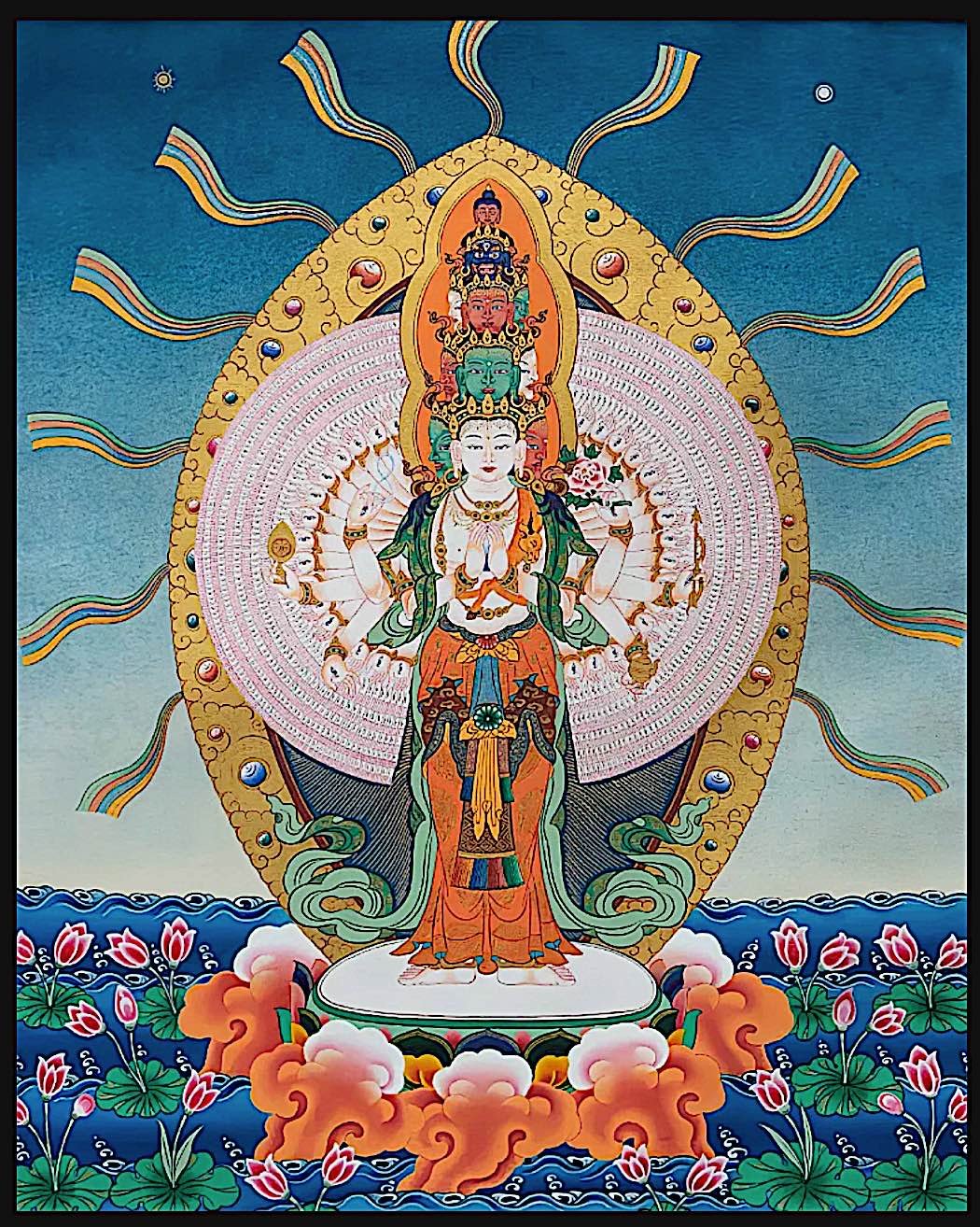
The Thousand Armed, eleven headed form deserves to be spoken of, and reflected upon. This is the compassion of all the Awakened Ones, as well as our own compassionate true nature, at last.
As with all Celestial Buddhas and Bodhisattvas, Archetypes, and Sacred Names and Forms, Avalokiteshvara can been called upon, and She will respond. This has been the testimony of many across cultures, and through the centuries.
As to why prayer or ritual works for one person, and not for another, or at times is effective beyond anything we could have ever imagined, and at other times there is no noticeable response, all I can say is – it’s beyond me, and, I do believe though that there is always some benefit.
To continue, what is most impressive perhaps on first glance at this image is the thousand arms… What could this mean?
Thousand in Eastern Traditions means, beyond counting. Sometimes this is expressed as ‘ten thousand’, with the same meaning.
So Avalokiteshvara, the image is telling us, has compassion that is immeasurable, that reaches everywhere; and further, there are different implements in Her hands – that I’ll just say a few words about specifically in a moment, but I’d first point out what there being different implements means.
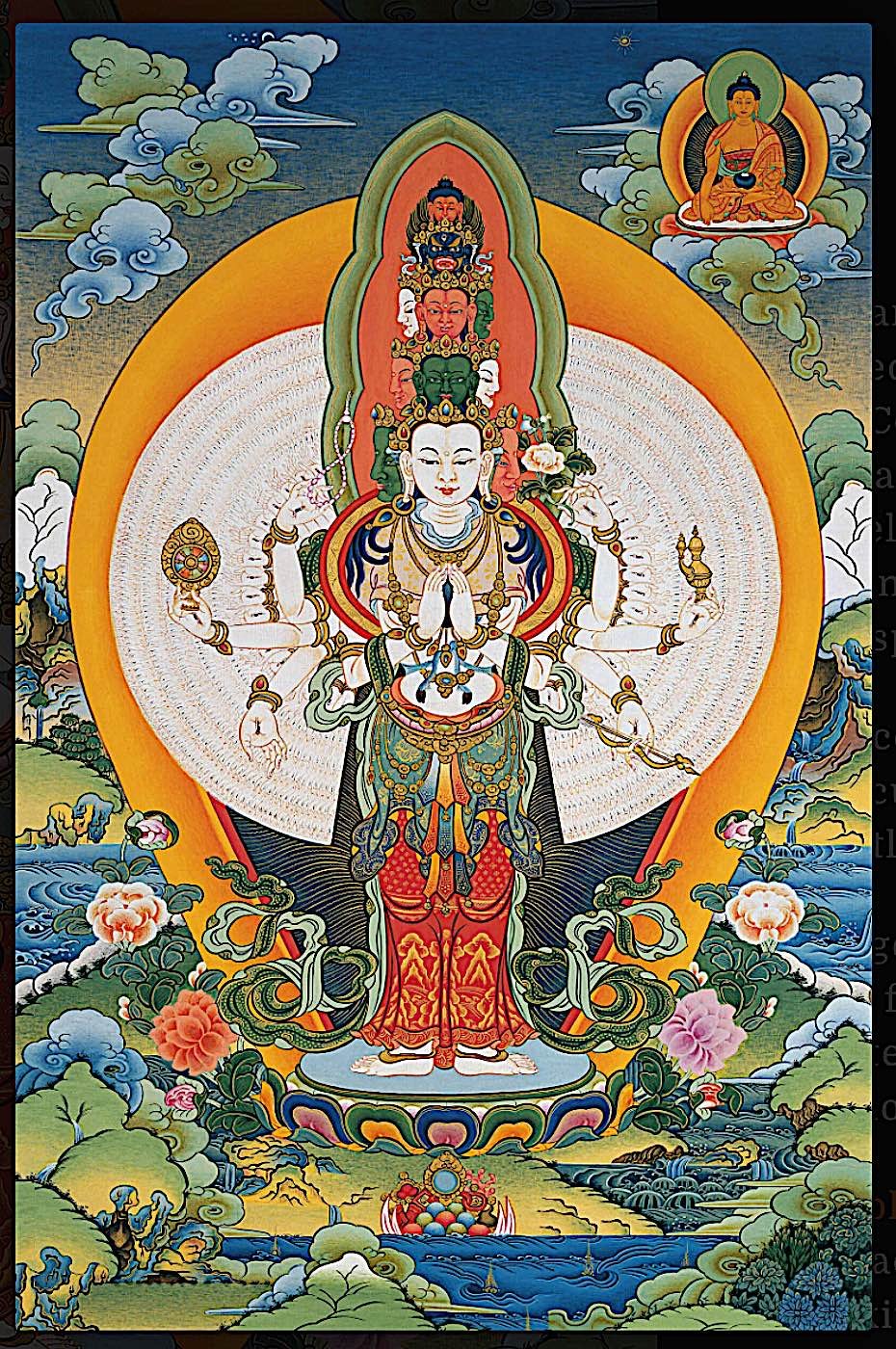
Avalokiteshvara manifests in whatever way is needed by sentient beings.
If they need a bridge, she manifests as a bridge, if a doctor and medicine, food and clothing, or teachings are needed, she manifests as these…
In the palm of each of Avalokiteshvara’s thousand hands we can see there is an eye, signifying that she knows what she is doing, that she has the wisdom that liberates, and the foresight to lead beings to temporal and ultimate freedom and ease, through her abundant and ever creative skillful means.
She holds in two hands at her heart a wish fulfilling jewel, because, after all, what we want is comfort and joy, here and after this life, well being and peace that lasts, and this symbol is saying, What you truly wish for, I provide.
In another hand there is a vase pouring out a stream of nectar…
This is seen also in the images of Kuan Yin,
and this water is not of the ordinary kind…
It is called the water of life.
It is exactly as Jesus said to the Samaritan woman at the well,
Whoever drinks this water will never thirst again….
and indeed, the water I give them will become in them a spring of water welling up to eternal life…
Another hand holds a lotus blossom, and another, a crystal mala.
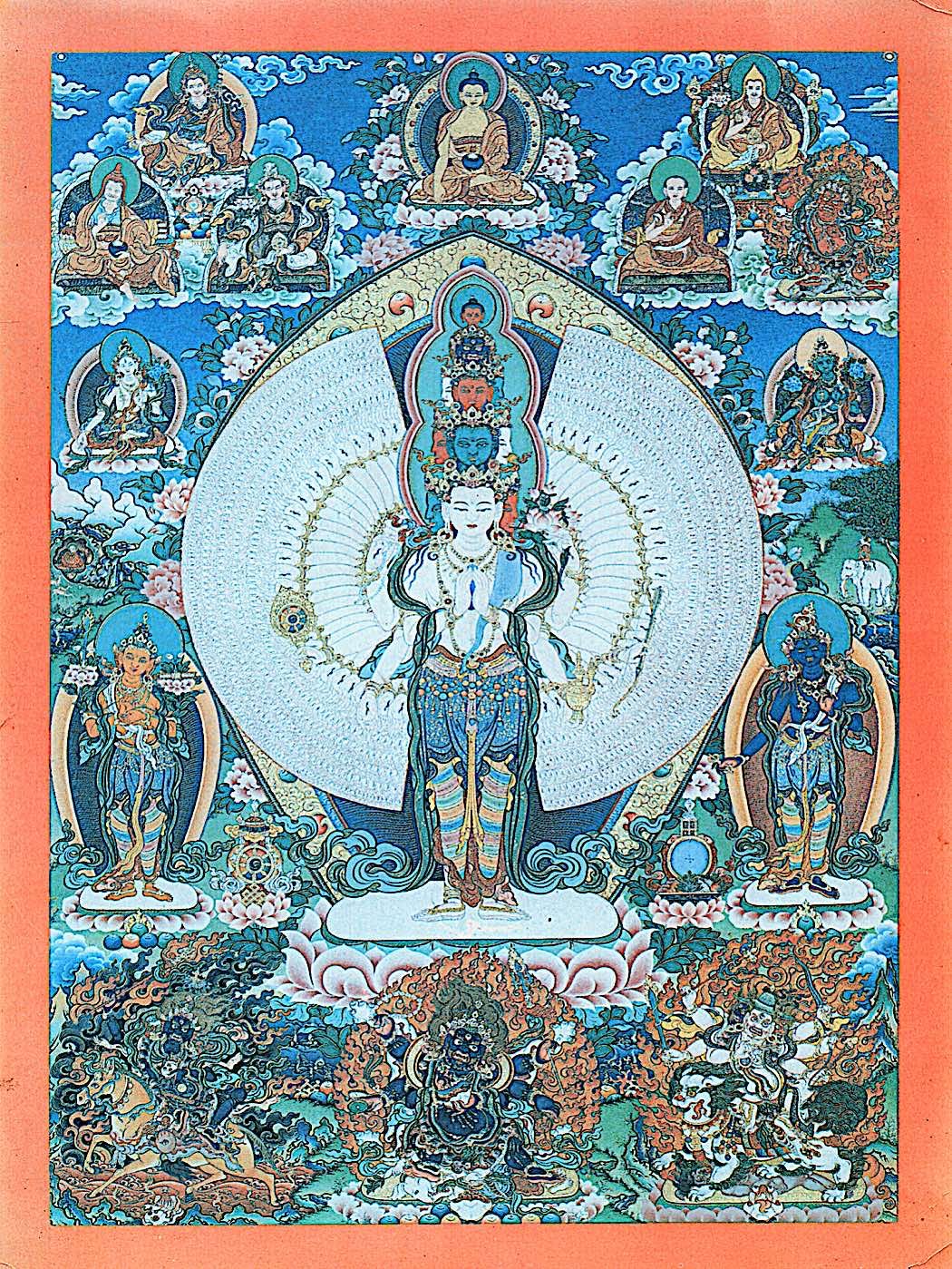
The lotus signifies being born from the mud, the ordinary stuff of life that people get caught in, but being unstained by it; beautiful like that, spotless, with nothing at all ‘sticking to it’, so to speak, such that it is delightful, and inspiring, and uplifting…
The mala, often with a hundred and eight beads, is a traditional tool used in spiritual traditions to aid concentration, and the meaning here is that Avalokiteshvara is always involved in prayer, sending forth Her grace, and in prayer-ful activities….
This can be something simple, or dramatic, hidden, or in plain sight…
The bow and arrow in another hand I’ve heard explained as the unity of samatha and vipassana, calm and insight.
We can have a steady mind, and this needs to be brought together one way or another with clear seeing into our true nature. This is what liberates. Wisdom is ultimately the Buddhist response to suffering.
We may have the best arrow, the clearest aim, or best understanding, intellectually, but to be effective in freeing the mind from suffering and more than that, its causes, we need the unity of calm abiding and transcendent awareness. This is what accomplishes our aim.
We need to bring the strong force of a unified mind to our liberating insight-practice, and the bow and arrow represent the need for this.
Another hand holds a Dharma Wheel, signifying that Avalokiteshvara is always teaching and inspiring sentient beings, so they can find freedom and ease.
And another is in the gesture of supreme generosity, signifying the very nature of awakened compassion…
To say something about Avalokiteshvara’s eleven heads, this harkens back to the origin story of this form of the Buddha of Compassion. It goes something like this:
Avalokitesvara took a vow to liberate all sentient beings from all their sufferings, and set to work doing exactly that. For many hundreds of thousands of years, she was effectively liberating beings, and bringing them the greatest peace, but when she looked again over the expanse of samsara, not only where there not fewer beings who were suffering, but there were even more!
Overcome by the intensity of her emotion, it’s said that Avalokiteshvara’s head split into eleven pieces…
Fortunately, Amitabha, the Buddha of Infinite Light at that very moment appeared and gathered these pieces together, restoring Avalokiteshvara now in this form.
Three faces are seen, in three tiers, followed by a dark blue, or blue-black head, and then that of a Red Buddha, of Amitabha Himself.
The colors are significant as well, showing something of the variable nature of Avalokiteshvara.
In the image I have, shown here, above and to the left and right respectively are Padmasambhava and his close disciples, and Je Tsong Khapa with his heart disciples; White and Green Tara manifest around the central figure, as do various wrathful manifestations of compassion, such as Mahakala
It looks like the one face on the first tier is white {as is her entire pristine, translucent body, and all her arms}, followed by another that looks blue facing left, and another that is red facing right.
{I received this from the Dalai Lama’s Monastery in Dharmasala, India, in 1998.}
Most descriptions have it this way:
‘The first tier has a white central face, a green right face, and a red left face. The second tier reverses the pattern with a green central face, a red right face, and a white left face. The final tier has a red central face, a white right face, and a green left face….’
White is the color of pacification, and so the four kinds of Buddha Activity can be mentioned here.
They are, pacifying, enriching, magnetizing, and destroying, also referred to peace, increase, power, and wrath.
Peace is represented by white, increase by green, or blue green, like a garden or fields blossoming in spring, power is represented by the color red, and blue-black, like a thundercloud is the color of wrath, or overpowering force.
As I heard it explained, the Buddhas and Bodhisattavas will use every means necessary to benefit beings. They will try peaceful methods, and if those are not effective, they will employ more strength, and even wrath, or
decisive compassionate power to protect as needed.
The dark blue, or the blue black face that is seen atop the rows of three then represents wrathful activities of the Buddhas.
Amitabha at the crown on the top of the eleven heads to me means their inseparability. I have also heard that this is in reference to Amitabha being the teacher of Avalokiteshvara, and being there as symbol of reverence, faith and devotion.
This being an image with roots in Indian Spirituality, there is a depth of connection with an enlightened being being represented that is unique and precious in our world. As with meeting a genuine, realized teacher, this is the source of all the good that follows, or we can say, that flows from that…
The powerful mantra of Avalokiteshvara is OM MANI PEME HUM, or OM MANI PEME HOONG (with a nasal sound at the end)
Here are a few audio recordings of the mantra…
The great qualities of this mantra have been taught by wonderful teachers such as His Holiness the Dalai Lama, Lama Zopa Rinpoche, and Geshe Dhargye.
{Here is a document with their teachings on the subject.}
To say a little more about the images around Thousand Armed Avalokiteshvara: though not part of the main image itself, often we will see devas, or angelic beings, Saints, the Buddha, and other Buddhas in the mandala, there with the central figure.
We can consider this two ways. One is to say that this is the retinue of Avalokiteshvara, just as a king or queen is always accompanied by their ministers, attendants, advisors, and protectors;
Another, deeper way to view the surrounding figures is to see them all as manifestations of Avalokiteshvara’s enlightened nature.
I have written before about Symbols, and composite symbols in Buddhism.
The gist of what I wrote last year is this:
Symbols belong to the earliest strata of the human mind and communication. They speak to us directly, if we are attuned to them, or when other factors are in place, such as having an affinity with what they express…
If we unlock the meaning of a symbol, it can be said that sometimes it happens spontaneously, right away, and at other times, we need to meditate on the symbol for it to reveal itself to us. It’s very clear when this happens. An understanding that was not there a moment before appears in the mind directly, and non-verbally, and it is something we understand with our whole self….
and,
Now, a composite image is something different in that each part of a thangka, {a Tibetan Buddhist painting or tapestry} for example, has its own meaning. Together, the symbols are mutually illuminating.
The chapters in a book, or the verses of a song, or the photographs in an essay are each unique, but together they can express a meaning that is more than the sum of its parts, and is even more powerful…
The different elements together can add to and enrich each other. All this becomes explicitly clear. There is an organic, inner unity to what thangkas and religious art communicate…
As with other composite images Buddhist art, we can begin to sense that what is shown to us all together is of one vivid and clear meaning.
Such is the form of Thousand-Armed Avalokiteshvara, with Her Retinue.
One more item of note. When meditating on the Buddhas or Bodhisattvas, teachers will often advise that we see both them and ourselves as transparent and luminous…
{See: A simple visualization, for a fuller description…}
Then, when engaging in a practice, such as reflection, prayer, or the recitation of mantra, we visualize that we receive blessings from the Buddha, Dharma and Sangha, and from all the Bodhisattvas and Devas in the form of light and nectar…
These dissolve into ourselves, and into all those we see as being with us now, our family and friends, those we don’t know, and those who are experiencing any difficulty at all…
We visualize that the light and nectar heals and calms, and nourishes, and inspires us all…
Of course, I believe that most of all spiritual art, such as the form of Thousand Armed Avalokiteshvara is offered to us as an invitation. To understand these symbols, we are encouraged to meditate on them.
When there is a personal affinity, their meaning can become clear to us, and it’s just like someone has placed a precious jewel right in the palm of our hand…
Miraculously, through making a connection with the Buddhas and Bodhisattvas, and and meditating on them, we can receive their blessings, and awaken their same qualities in ourself.
We too can become Avalokiteshvara, or Tara, or Manjushri in this world of ours. Amazing.
Namo Avalokiteshvaraya!
* * *
Here is a collection of images of Thousand Armed Avalokiteshvara,
A volume of Chenrezig Commentaries,
and a book of poetry, In Praise of Avalokiteshvara
1 thought on “The Symbolism of Thousand Armed Avalokiteshvara – Universal Compassion”
Leave a Comment
More articles by this author
Search
Latest Features
Please support the "Spread the Dharma" mission as one of our heroic Dharma Supporting Members, or with a one-time donation.
Please Help Support the “Spread the Dharma” Mission!
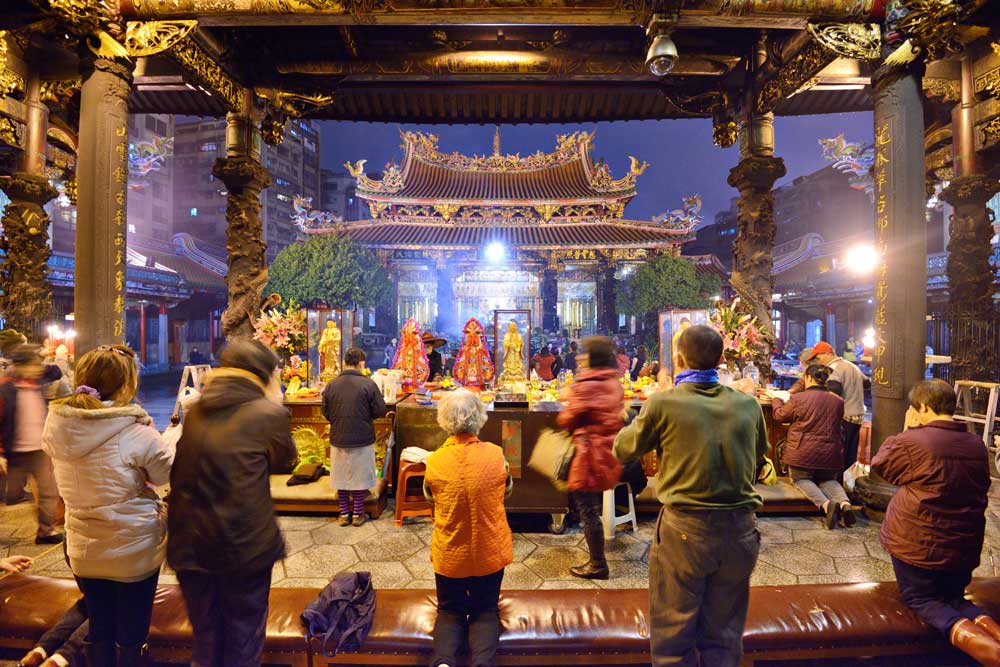
Be a part of the noble mission as a supporting member or a patron, or a volunteer contributor of content.
The power of Dharma to help sentient beings, in part, lies in ensuring access to Buddha’s precious Dharma — the mission of Buddha Weekly. We can’t do it without you!
A non-profit association since 2007, Buddha Weekly published many feature articles, videos, and, podcasts. Please consider supporting the mission to preserve and “Spread the Dharma." Your support as either a patron or a supporting member helps defray the high costs of producing quality Dharma content. Thank you! Learn more here, or become one of our super karma heroes on Patreon.
Jason Espada
Author | Buddha Weekly
Jason Espada is a writer and classical musician living in San Francisco; a steward of his father’s photography, and the founder of A Buddhist Library: http://www.abuddhistlibrary.com. Over the years, he’s made a number of recordings of Buddhist teachings. These days his focus is on the natural connection between spirituality and social action. His new website is at JasonEspada.com.
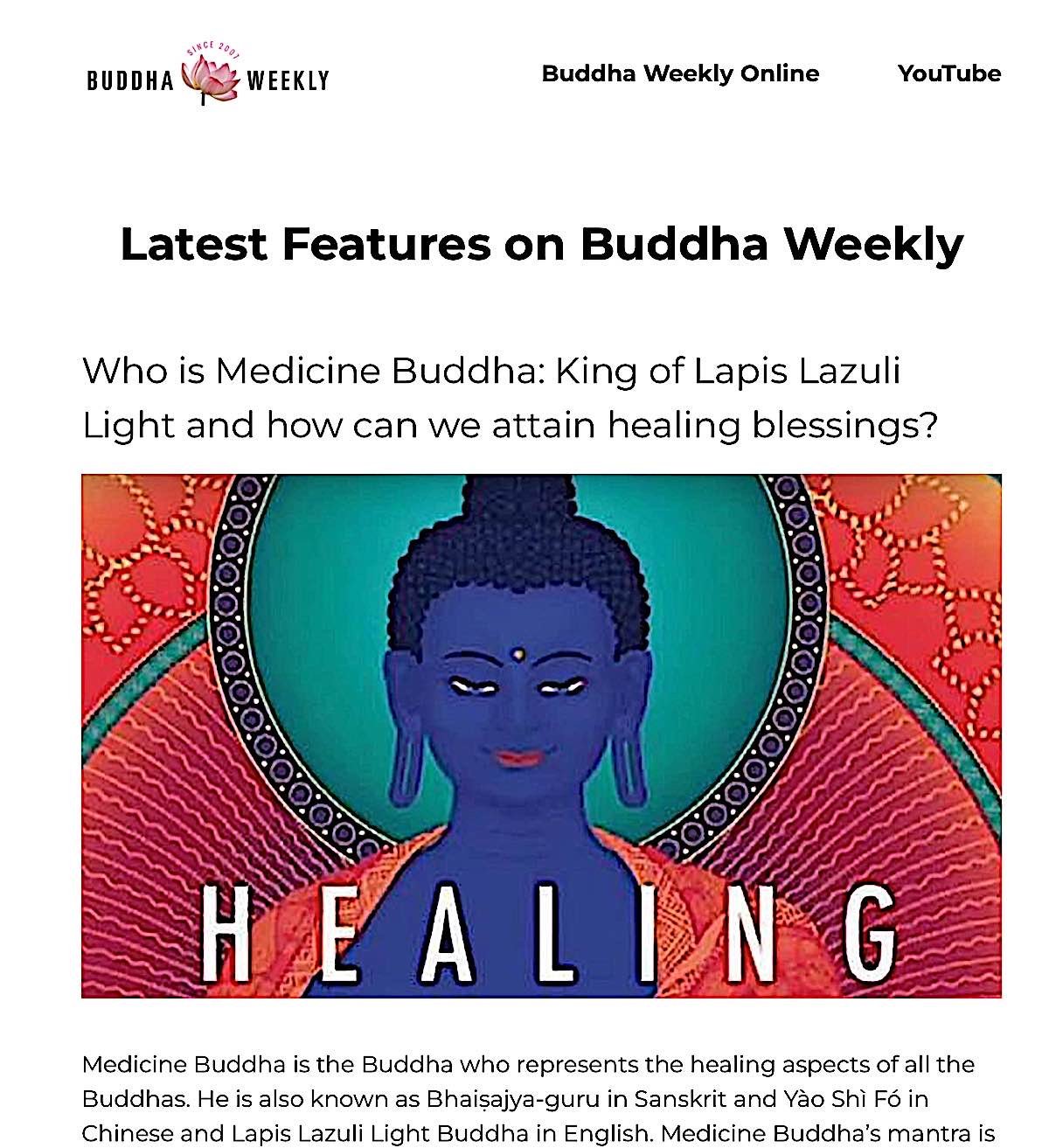
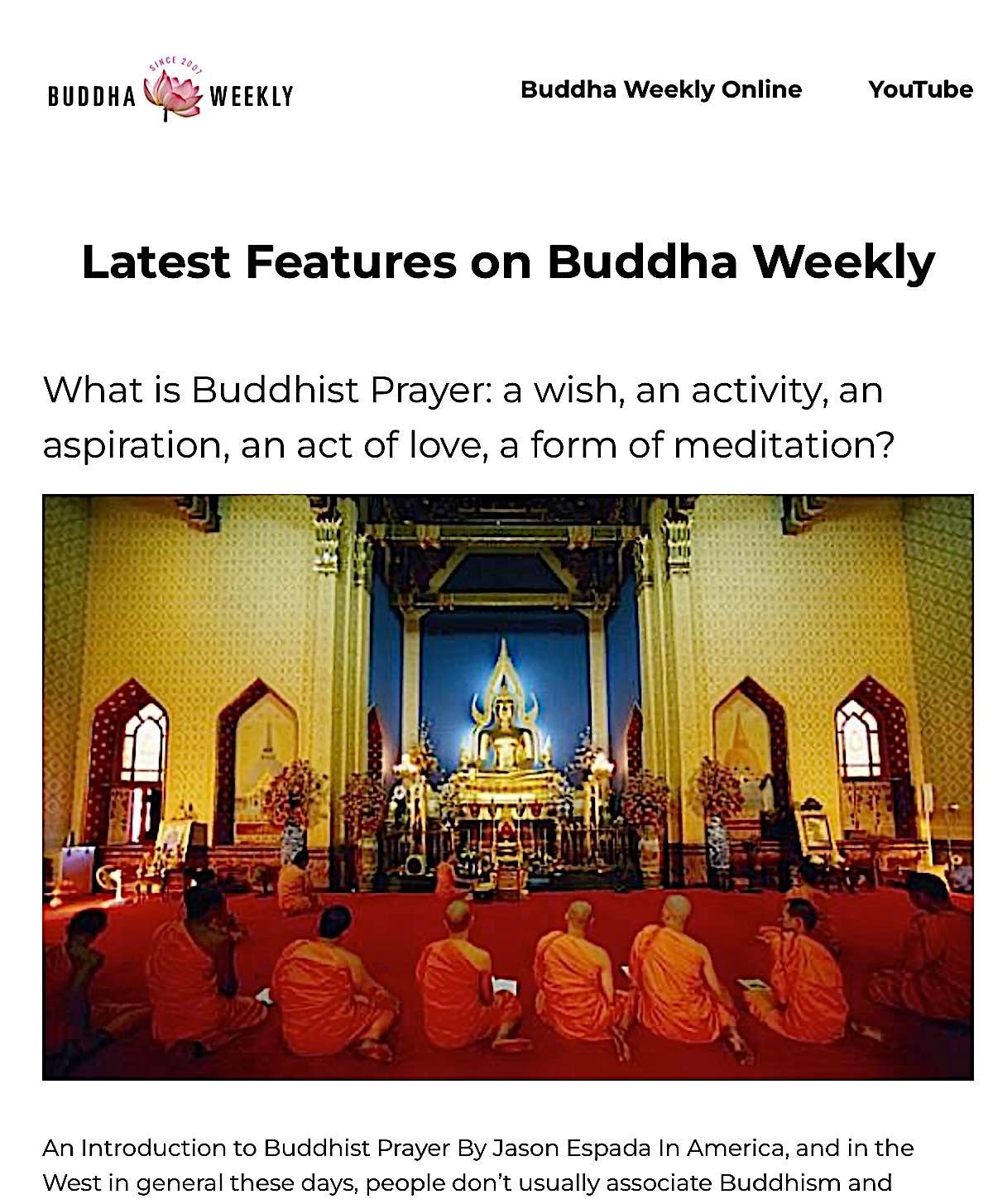




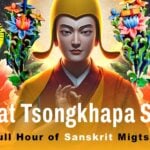
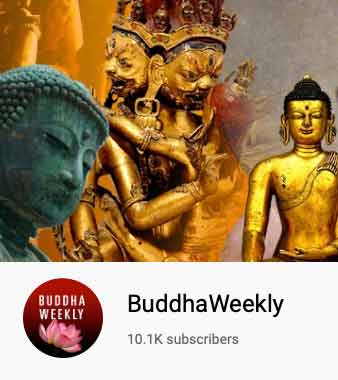
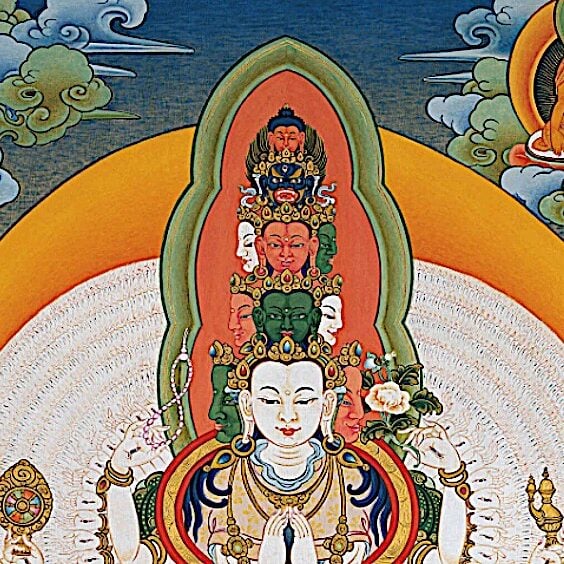





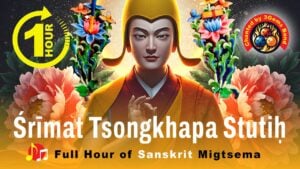
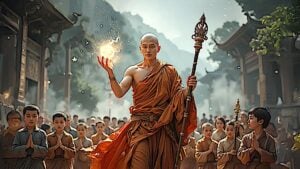



Thank you for the wonderful article! This is just my personal meditation, but there came a time I wanted to make the 11 Faces more personal for me.
And it seemed–to me–that the 11 Faces corresponded to the sequence of 10 Paramitas (the oldest list), plus an 11th of full Buddhahood.
Generosity (dana)
Moral conduct (sila)
Renunciation (nekkhamma)
Wisdom (paññā)
Energy (viriya)
Patience (khanti)
Truthfulness (sacca)
Determination (adhitthana)
Loving-kindness (metta)
Equanimity (upekkha)
Actually, the wrathful nature of the 10th, next to top, Face could relate to Equanimity which includes justice and impartiality. And the topmost, 11th, Buddha Face sums up everything!
Someone else might use a different list to correspond to the 11 Faces, but this one works for me and makes them more direct and real for me. 🙂